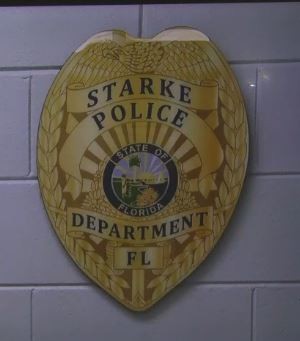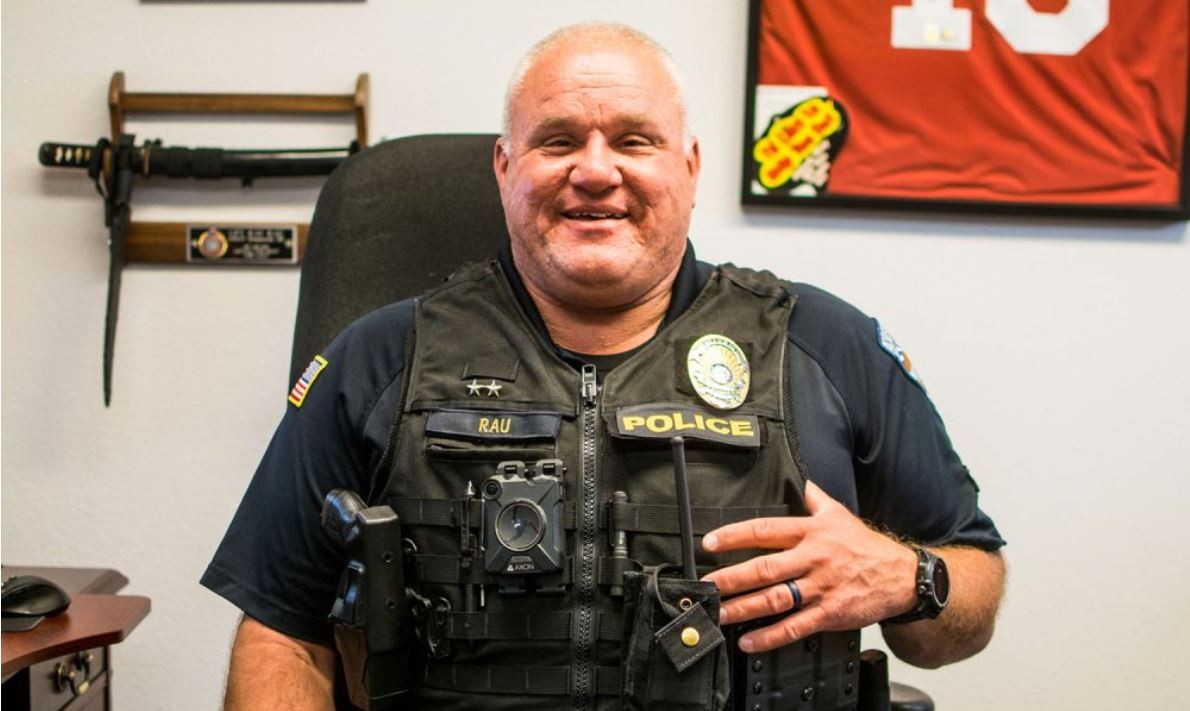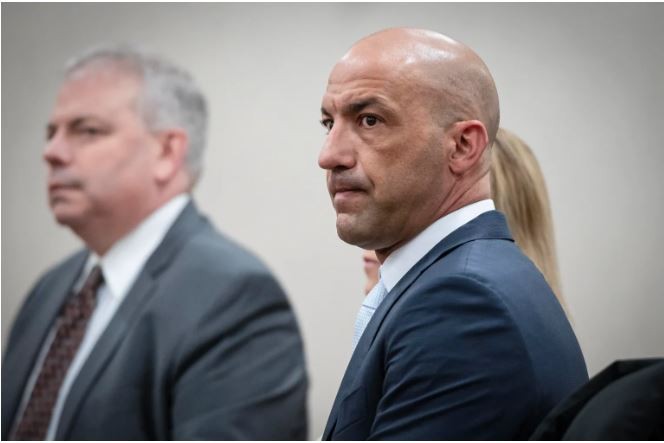City police hunt space for storing evidence
Austin American-Statesman (Texas), Final Edition
SECTION: NEWS; Pg. A01
BYLINE: Tony Plohetski AMERICAN-STATESMAN STAFF
Austin, TX
Austin police officers confiscate stolen property, drugs and illegal weapons each day.
Problem is, they have few places to put it all.
The Austin Police Department is short on evidence space and has no central storage facility, a situation that for years has left investigators cramming property for criminal prosecutions into anything from empty closets to rented warehouses.
Authorities said the space crunch leaves investigators with the threat that evidence will be lost, contaminated or stolen - none of which has happened so far, police say - and requires hours of additional work for employees who must sort the materials before driving them to an available space.
"We are having to settle for places we can find," said Ed Harris, who is in charge of storing evidence for the department. "These places were not designated for police evidence storage. They are just a space - a space that was available."
A leased 60,000-square-foot building in South Austin, for instance, houses more than a million pieces of property, including televisions and stereos recovered from burglars. Guns, bicycles, lawn mowers and other gas-operated equipment are kept in a gated area at Austin police headquarters downtown.
Marijuana, cocaine and other drugs - as well as cash seized from drug dealers - are locked up at a police substation in East Austin. And DNA evidence from sexual assault cases is stored in a city-owned space in Central Austin.
Two months ago, the department plopped nearly 1,000 eight-liner gambling machines in a field behind the police training academy in Southeast Austin because they had nowhere else to take them. The machines were rained on, and some were damaged, but prosecutors said the eight-liners can still be used as evidence.
Harris said shortage has been an issue for the department for at least three years but grew worse in October when the department got booted from a hangar at the old Austin airport to make room for redevelopment of the airport site. The hangar housed at least 75 percent of the department's evidence, Harris said.
At an evidence sorting facility on Springdale Road, nine technicians work round-the-clock processing dozens of pieces of evidence brought in by officers each day, bagging and tagging each item with an identification number.
Then they have to decide where items should be stored. Harris said biological materials such as DNA swabs are treated with the highest priority and often must be refrigerated.
Evidence space shortage is a problem that has long faced police agencies, particularly in growing cities, said Joseph Latta, executive director of the International Association for Property and Evidence.
"It's a huge problem across the country," he said.
Much of the problem is the result of over-collection and a reluctance to get rid of items once investigators have seized them.
Latta said about 1 percent of evidence officers collect nationally is used in court, but investigators are often afraid to get rid of the rest before trial. Other departments do not have a system for removing evidence from storage, even if investigations have reached a dead end and a case will not result in an arrest.
In Austin, police often must keep property for up to five years, but they can get rid of it sooner if a case is resolved in court or if a judge orders officers to destroy it or return it to its owners, Harris said.
Guns and drugs are routinely destroyed.
If no charges are filed in a case, prosecutors give investigators permission to destroy or return property.
State law requires the department keep the property for at least 10 years if the owners can't be found.
City officials recently bought a warehouse on Cameron Road that will give the police department at least 25,000 square feet of additional space. Workers are now building shelves in the warehouse and are finishing a security system that will include cameras and alarms.
"They will have enough space to meet our current demand," Assistant City Manager Rudy Garza said. "Obviously, this is not a permanent solution, and we are going to continue to have to look at this and see what we need to do in the future."
Harris said the department needs at least an additional 90,000 square feet, particularly if investigators continue to conduct large property seizures similar to the eight-liners raids.
"The locations we have are not ideal storage facilities," Harris said. "They are temporary facilities until we can come to a conclusion on what the ideal facility is for all police evidence."
; 445-3605
- - - - - - - - - - - - - - - - - - - - - - - - - - - - - - -
International Association for Property and Evidence
"Law Enforcement Serving the Needs of Law Enforcement"
www.IAPE.org
SECTION: NEWS; Pg. A01
BYLINE: Tony Plohetski AMERICAN-STATESMAN STAFF
Austin, TX
Austin police officers confiscate stolen property, drugs and illegal weapons each day.
Problem is, they have few places to put it all.
The Austin Police Department is short on evidence space and has no central storage facility, a situation that for years has left investigators cramming property for criminal prosecutions into anything from empty closets to rented warehouses.
Authorities said the space crunch leaves investigators with the threat that evidence will be lost, contaminated or stolen - none of which has happened so far, police say - and requires hours of additional work for employees who must sort the materials before driving them to an available space.
"We are having to settle for places we can find," said Ed Harris, who is in charge of storing evidence for the department. "These places were not designated for police evidence storage. They are just a space - a space that was available."
A leased 60,000-square-foot building in South Austin, for instance, houses more than a million pieces of property, including televisions and stereos recovered from burglars. Guns, bicycles, lawn mowers and other gas-operated equipment are kept in a gated area at Austin police headquarters downtown.
Marijuana, cocaine and other drugs - as well as cash seized from drug dealers - are locked up at a police substation in East Austin. And DNA evidence from sexual assault cases is stored in a city-owned space in Central Austin.
Two months ago, the department plopped nearly 1,000 eight-liner gambling machines in a field behind the police training academy in Southeast Austin because they had nowhere else to take them. The machines were rained on, and some were damaged, but prosecutors said the eight-liners can still be used as evidence.
Harris said shortage has been an issue for the department for at least three years but grew worse in October when the department got booted from a hangar at the old Austin airport to make room for redevelopment of the airport site. The hangar housed at least 75 percent of the department's evidence, Harris said.
At an evidence sorting facility on Springdale Road, nine technicians work round-the-clock processing dozens of pieces of evidence brought in by officers each day, bagging and tagging each item with an identification number.
Then they have to decide where items should be stored. Harris said biological materials such as DNA swabs are treated with the highest priority and often must be refrigerated.
Evidence space shortage is a problem that has long faced police agencies, particularly in growing cities, said Joseph Latta, executive director of the International Association for Property and Evidence.
"It's a huge problem across the country," he said.
Much of the problem is the result of over-collection and a reluctance to get rid of items once investigators have seized them.
Latta said about 1 percent of evidence officers collect nationally is used in court, but investigators are often afraid to get rid of the rest before trial. Other departments do not have a system for removing evidence from storage, even if investigations have reached a dead end and a case will not result in an arrest.
In Austin, police often must keep property for up to five years, but they can get rid of it sooner if a case is resolved in court or if a judge orders officers to destroy it or return it to its owners, Harris said.
Guns and drugs are routinely destroyed.
If no charges are filed in a case, prosecutors give investigators permission to destroy or return property.
State law requires the department keep the property for at least 10 years if the owners can't be found.
City officials recently bought a warehouse on Cameron Road that will give the police department at least 25,000 square feet of additional space. Workers are now building shelves in the warehouse and are finishing a security system that will include cameras and alarms.
"They will have enough space to meet our current demand," Assistant City Manager Rudy Garza said. "Obviously, this is not a permanent solution, and we are going to continue to have to look at this and see what we need to do in the future."
Harris said the department needs at least an additional 90,000 square feet, particularly if investigators continue to conduct large property seizures similar to the eight-liners raids.
"The locations we have are not ideal storage facilities," Harris said. "They are temporary facilities until we can come to a conclusion on what the ideal facility is for all police evidence."
; 445-3605
- - - - - - - - - - - - - - - - - - - - - - - - - - - - - - -
International Association for Property and Evidence
"Law Enforcement Serving the Needs of Law Enforcement"
www.IAPE.org


